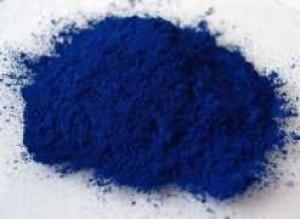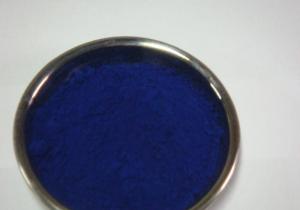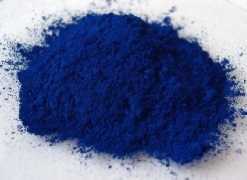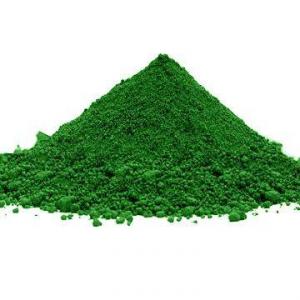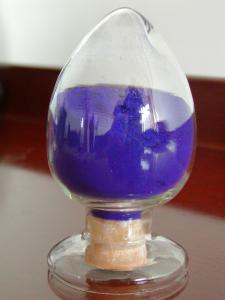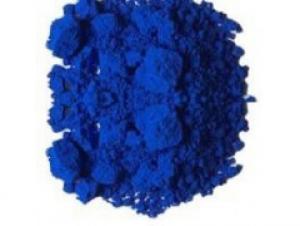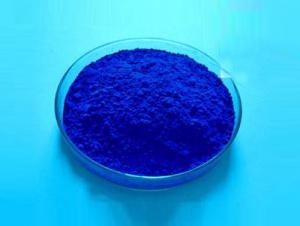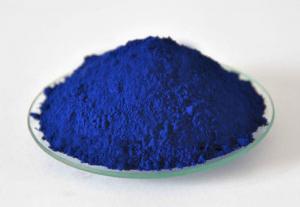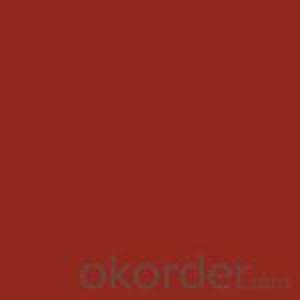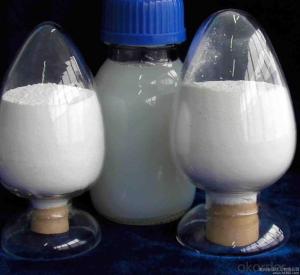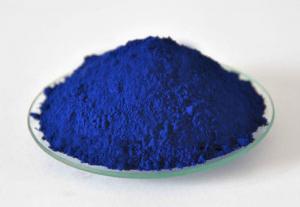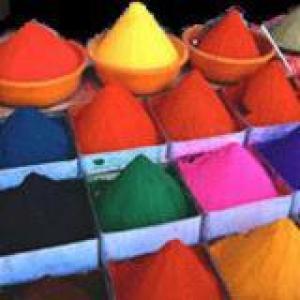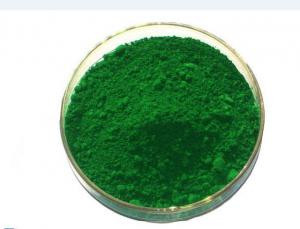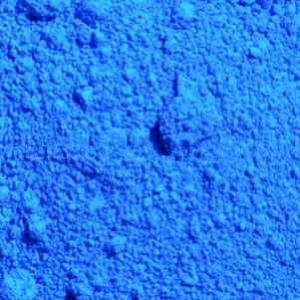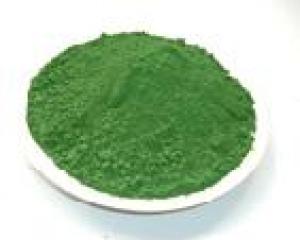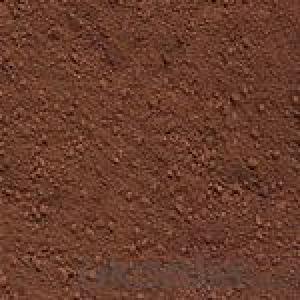Pigment Blue 15:1 For Coating
- Loading Port:
- Qingdao Port
- Payment Terms:
- TT or LC
- Min Order Qty:
- 1 Metric Ton m.t.
- Supply Capability:
- 7,500MT/Year m.t./month
OKorder Service Pledge
OKorder Financial Service
You Might Also Like
Product Details of Phthalocyanine Blue L6905F:
Production Details of Phthalocyanine Blue | |||
Chemical Structure | CuPc α | ||
Color Index No. | PB 15:0 | ||
Application | Ink | ||
Physical Form | powder | ||
Test Items | Index | Test Method | |
Relative Tinting Strength | 100 +_5% | DIN55986 | |
ΔE,ΔL,Δa,Δb | ≤1,+1,+1,+1 | ||
PH | 5.8~8 | DIN ISO 787-9 | |
Density 20℃ g/cm3 | 1.6 | DIN ISO 787-10 | |
BET m2/g | 66 | DIN 66131 | |
Oil absorption g/100g | 35~45 | DIN ISO 787-5 | |
105℃ Volatile Matter | ≤1.0% | DIN ISO 787-2 | |
Water Solubles | ≤1.5% | DIN ISO 787-13 | |
Residue on Sieve 100 mesh | ≤5% | DIN 53195 | |
Conductivity us/cm | ≤300 | DIN ISO 787-14 | |
Solvent Resistance | Index | Test Method | |
Water | 5 | DIN ISO 105-A03 | |
White Spirit | 5 | DIN ISO 105-A03 | |
Tolerance | Index | Test Method | |
Light Fastness | 8 | DIN ISO 105-A03 | |
Weather Resistance | 5 | DIN ISO 105-A03 | |
Acid Resistance | 5 | DIN ISO 105-A03 | |
Alkali Resistance | 5 | DIN ISO 105-A03 | |
Packing Details Of Phthalocyanine Blue L6905F :
25kg/ kraft or PP bag , or as your requirements .
Application Of Phthalocyanine Blue L6905F :
1) Printing ink
2) Paint
3) Plastic
4) Rubber
5) Pharmaceuticals
6) Printing colors
7) Highly dispersible
8) High density pigment used for addition of coloration
9) Limited anti-dissolvent and anti-flocculability
10) High temperature resistance and sunshine resistance
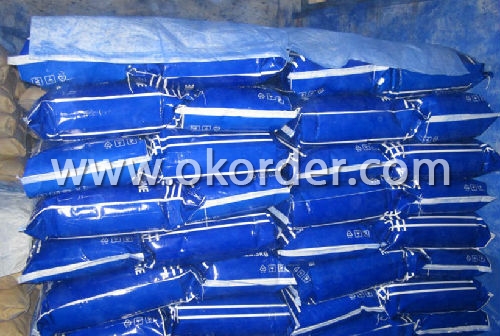
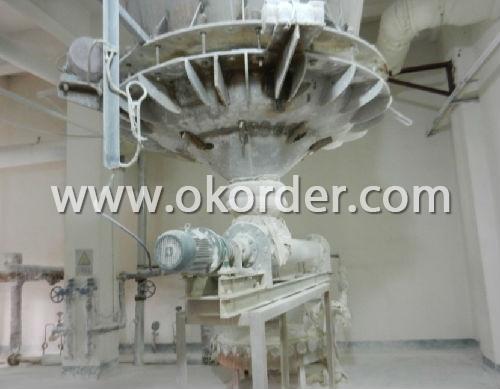
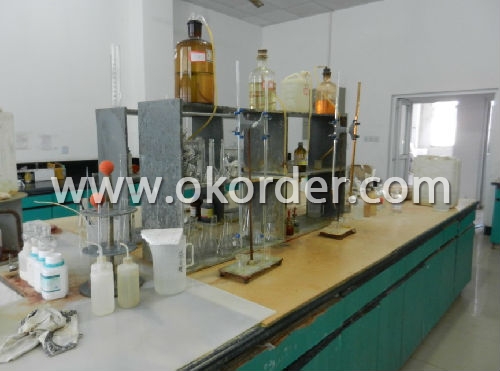
- Q: I need to find powdered paint or pigment that I can throw, for some photographs.Preferably cheap, and that wouldn't stain skin.I've looked into powder paint, though this tends to stain skin for about a week.Thanks :)
- Wear protective gloves if you don't want your hands stained. You should also be concerned because many pigments have toxic chemicals that can absorb through the skin.
- Q: what are the differences between colorfast and non colorfast pigments?
- Pigments, are generally solids and are usually insoluble in the medium in which the pigment is being used. Pigments, are typically used instead of dyes in applications where color migration or bleeding is undesirable. One possible approach to create a colorfast pigment for use in something like toothpaste would be in a layered anion exchange material which is contacted with the dye under conditions in which a water-insoluble pigment is obtained. The water soluble dye and the layered anion exchange material would normally be contacted together in a liquid medium in which the dye has been dissolved. The layered anion exchange material is preferably a layered aluminate of some kind. Generally, pigments are graded by international standards for color fastness. Eight is the most color fast, and anything over six will do quite well out-of-doors. As ancient Frescoes, sand paintings, petroglyphs and other pure-pigment art demonstrate, certain pigments can remain in direct sunlight for thousands of years without any indication of fading. These pigments are earth, metal, and chemical colors that are neither dyes nor tints. Dyes and tints, such as alizarin crimson, berry juice, etc. will bleach quickly due to ultraviolet exposure that occurs in direct or indirect sunlight. Today most paints are derived from much different sources than they were as recently as fifty years ago. Real cadmium, cobalt, copper oxide, to name a few, are no longer used. They are now formulated to appear similar to the traditional pigments. They may be extended out with white, resulting in an appearance that can differ with traditional counterparts. For the most part these new colors are very colorfast and without the addition of medium or varnish they will not fade when left in direct sunlight.
- Q: Compare and contrast pigment color with the color seen from a light. What is the difference between mixing pigment colors and mixing light colors?
- Pigments are chemicals that selectively absorb and reflect different spectra of light. When a surface is painted with a pigment, light hitting the surface is reflected, minus some wavelengths. This subtraction of wavelengths produces the appearance of different colors. Most paints are a blend of several chemical pigments, intended to produce a reflection of a given color. Mixing pigments is subtractive. Mixing light is additive. Let's take the primary pigments, red, blue and yellow. Red pigment is red because the chemical it is made of absorbs (subtracts) blue and yellow light that falls on it and reflects only red light to your eye. Similarly, blue pigment is blue because it absorbs red and yellow light and reflects only blue. So when you mix the three primary pigments together, you produce something that absorbs all of the light falling on it in equal amounts and reflects nothing to your eye. Thus, it appears black. In contrast, when you mix only red and blue light, there isn't any yellow in it, so the resulting light appears purple (the complement of yellow). Likewise, if you mix red and yellow light it appears orange (the complement of blue). If you mix all three colors of light together (in equal amounts), the resulting light appears white because it contains all of the colors of the spectrum. This explanation is sound, although greatly simplified. The two summaries above are not my own, nor do I claim them as mine.
- Q: I hear about it cause my Friend is albino and she was born with no pigments in her hair,skin or eyes
- Melanin (i /?m?l?n?n/; Greek: μ?λα?, black) is a pigment that is ubiquitous in nature, being found in most organisms (spiders are one of the few groups in which it has not been detected). In animals melanin pigments are derivatives of the amino acid tyrosine. The most common form of biological melanin is eumelanin, a brown-black polymer of dihydroxyindole carboxylic acids, and their reduced forms. All melanins are derivatives of polyacetylene. The most common melanin – dopamelanin – is a mixed copolymer of polyacetylene, polyaniline, and polypyrrole. Another common form of melanin is pheomelanin, a red-brown polymer of benzothiazine units largely responsible for red hair and freckles. The presence of melanin in the archaea and bacteria kingdoms is an issue of ongoing debate among researchers in the field. The increased production of melanin in human skin is called melanogenesis. Production of melanin is stimulated by DNA damage induced by UVB-radiation,[1] and it leads to a delayed development of a tan. This melanogenesis-based tan takes more time to develop, but it is long lasting.[2] The photochemical properties of melanin make it an excellent photoprotectant. It absorbs harmful UV-radiation and transforms the energy into harmless heat through a process called ultrafast internal conversion. This property enables melanin to dissipate more than 99.9% of the absorbed UV radiation as heat[3] (see photoprotection). This prevents the indirect DNA damage that is responsible for the formation of malignant melanoma and other skin cancers. Albinism (from Latin albus, white; see extended etymology, also called achromia, achromasia, or achromatosis) is a congenital disorder characterized by the complete or partial absence of pigment in the skin, hair and eyes due to absence or defect of an enzyme involved in the production of melanin.
- Q: what is pigment?
- Pigment is a substance that can be found in plants and animals that has the property of absorbing light and to reflex it
- Q: thinking about the main role of pigments in photosynthesis...? explain how the pigments in colored objects suc?
- photosynthetic pigment or antenna pigment is a pigment that is present in chloroplasts or photosynthetic bacteria and captures the light energy necessary for photosynthesis. Green plants have five closely-related photosynthetic pigments (in order of increasing polarity): Carotene - an orange pigment Xanthophyll - a yellow pigment Chlorophyll a - a blue-green pigment Chlorophyll b - a yellow-green pigment Phaeophytin a[1] - a gray-brown pigment Phaeophytin b[1] - a yellow-brown pigment Chlorophyll a is the most common of the six, present in every plant that performs photosynthesis. The reason that there are so many pigments is that each absorbs light more efficiently in a different part of the spectrum. Chlorophyll a absorbs well at a wavelength of about 400-450 nm and at 650-700 nm; chlorophyll b at 450-500 nm and at 600-650 nm. Xanthophyll absorbs well at 400-530 nm. However, none of the pigments absorbs well in the green-yellow region, which is responsible for the abundant green we see in nature.
- Q: how to prepare coloured pigments?
- Pigment does not might desire to do with pores and skin inevitably, a paint could be tinted with a pigment. curiously it is likewise a dry colorant, many times an insoluble powder. pores and skin colour is set by using the quantity of melanin in one's pores and skin, relative to ranges of exposure to the sunlight.
- Q: pigment: its color (to our eyes) what color of light it absorbsChl a Chl bCartenoidsany right answers would bbe greatly appreicated thanks soo muchhh
- pigment: .... reflected color to eyes .. what color of light it absorbs Chl a reflects green spectra between the blue and red absorption peaks. Some is absorbed at blue 450nm but most absorbed at red 680 - 700nm. Chl b reflects green spectra between the blue and red absorption peaks with a difference in which peak is stronger. Most is absorbed at blue 470 but also some at blue 430 and red 640 nm. Cartenoids reflect yellow, orange, or red and absorbs blue to blue-green light spectra. Xanthophyll absorbs well at 400-530 nm. Xanthophylls are a common sub class of the carotenoid pigment group. Beta-carotene absorbs most strongly between 400-500 nm.
- Q: (After the fifteenth century)
- Pigment is color in powder form. An example is lamp black; it was first made from the soot of kerosene lamps ground fine. Binder is a substance used to hold pigment together and make it adhere; in the previous example, linseed oil would be the binder for the lamp black pigment. Vehicle is a medium acting as a solvent, carrier, or binder for paint; turpentine or mineral spirits would be a vehicle but so would linseed oil as well to help dilute the paint and help it cover a large area. Hope that helps and thanx.
Send your message to us
Pigment Blue 15:1 For Coating
- Loading Port:
- Qingdao Port
- Payment Terms:
- TT or LC
- Min Order Qty:
- 1 Metric Ton m.t.
- Supply Capability:
- 7,500MT/Year m.t./month
OKorder Service Pledge
OKorder Financial Service
Similar products
Hot products
Hot Searches
Related keywords
